Gastropods comes from the Greek: gastric (belly) and podos (foot). This term underlines the broad foot on which their viscera lay.
This class of molluscs exists in all possible environments (terrestrial, marine, fresh or brackish water).
Life expectancy depends on the environment (sea, land, fresh water) and the species. The following orders of magnitude can be given:
Gastropods begin to build their shells when they are still only in the form of microscopic larvae. The initial shell is called the protoconch.
During the growth of the animal, to the protoconch are added secretions from the mantle around the opening of the shell. These secretions accumulate in spiral rings, becoming wider and wider to adapt to the growth of the animal's body. (imagine a superimposition of rings widening and winding around a fixed axis, like a corkscrew).
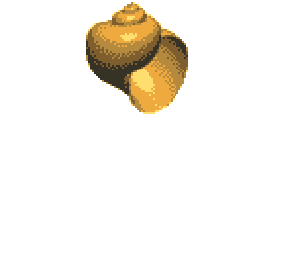
In cowry, the last round includes all the other turns (a bit like nautiluses).
Inside the shell is the columella (from the Latin "small column") which starts from the apex down along the axis of the shell (like the central bar of a spiral staircase).

The opening through which the animal can exit its shell to move, eat and breathe is called the "peristome" (or more simply, the opening). It is the last ring of the last round. A distinction is made between holostome (perfectly rounded peristome) and siphonostome (peristome with a siphonal canal) openings.
The part of the opening close to the columella is called the parietal lip or internal lip. The opposite part, the labrum, labial edge or external lip. The upper part of the collumellar border is sometimes enlarged and flattened, we speak then of parietal border or of collumellar callosity.
The tip of the shell (initially the protoconch) is called the "apex". Each round of the shell is called a "whorl".
The last turn leads to the opening and contains the visceral mass, it is the main turn (body whorl). The other turns, above, form the "spire"
A suture joins the whorls. NB it can be mistakenly set as plurial but in fact it's a continuous line as vinyl LP record.

The columella can extend and form the siphonal canal. It can be hollow and set back from the shell, this is called an umbilicus.

Many gastropods have an "operculum". it is a kind of hard and thick tray attached to the foot of the animal and which coincides with the outline of the opening. When the animal retracts into its shell, the operculum seals the opening like a protective cover. It is sometimes used as an ice ax to move around, to search the bottom or as a mace. They are also called "cat's eye" in decoration or jewelry.

Spines form at regular periods during mantle growth spurts, when the organ expands so quickly that it cannot align with the aperture. This mismatch causes the mantle to buckle slightly. The shell-building material it releases then assumes the buckled-shape. Each round of the mantle growth and subsequent mechanical conflict with the aperture amplifies the buckled pattern. (from Scientific American)
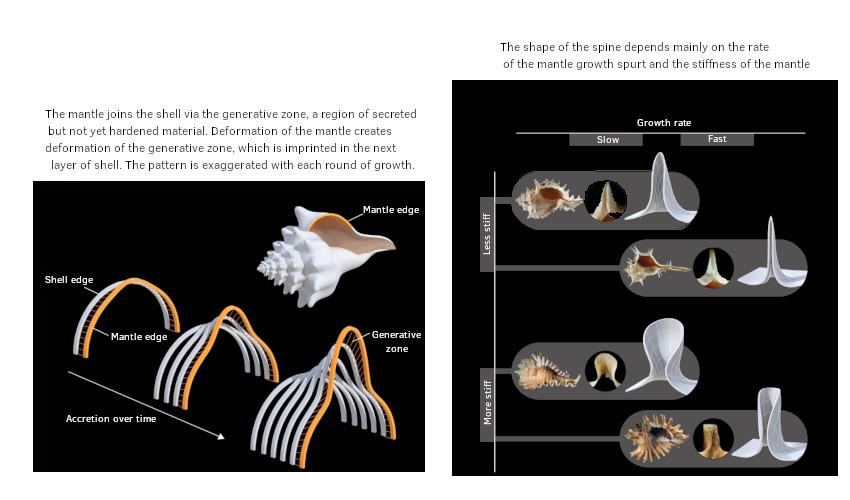
The largest known gastropod is the "Syrinx aruanus" (Turbinellidae) which can measure up to 91 cm and weigh 18 kg
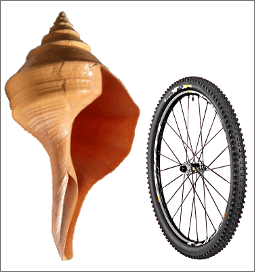
They became asymmetrical due to the spiral winding of the visceral mass enclosed in a helical shell.
The foot is connected to the columella by the powerful columellar muscle and whose contraction causes the animal to re-enter its shell.
The head includes the mouth, a pair of eyes and one or two pairs of tentacles.
Most marine gastropods have a mantle extension called a siphon through which water is drawn into the mantle cavity and over the gills for respiration. This siphon is a flexible and fleshy structure in the form of a tube equipped with chemoreceptors which “smell” or “taste” the water, in order to hunt for food. Marine gastropods with a siphon are either predators or scavengers. Although in gastropods the siphon functions perfectly like a tube, it is actually not a hollow organ, it is simply a flap of the mantle that is coiled into a tube shape. In many marine gastropods where the siphon is particularly long, the structure of the shell has adapted to accommodate and protect the soft tissue of the siphon. This is the siphonal canal.
Below, the 47 "levels" (Order, Superorder, ...) grouping together the 135 superfamilies of gastropods (shaded levels only contain sea slugs).
Frames include families and super-families with the same ancestry. The ascendancy of a gastropod superfamily does not always rank "Order". We therefore indicate the name and, in parentheses, the type of rank (superorder, suborder, infraorder, ...)example: Achatinina (Suborder)If an "Order" is not yet assigned, the ascendant of this order is displayed:[unassigned Order of Caenogastropoda]If the Superfamily of an "O" order is not defined, we display [? O]:[? Cladobranchia]If the family of a "S" superfamily is not defined, we display [unassigned] S:[unassigned] TrochoideaIf there is no Superfamily, we display the empty symbol (∅)Following the names of the families, the colored dots indicate the environment:
• (marine) • (brackish) • (fresh water) • (terrestrial)The gray lines in italics indicate families without shells (slugs)click on a superfamily (or on ∅) to display or hide its families
(These data are extracted (August 2023) from the "Aphia" taxonomic database thanks to the web services of the WoRMS site)
Conversely, my page dedicated to collectors allows you to display the ancestors (L+1 and L+2) of a family of gastropods.
This class of molluscs exists in all environments except the terrestrial environment.
Life expectancy varies on average between 10 (mussels) and 20 years (oysters). Exceptionally, a clam was found whose age is estimated at 507 years !
Growth takes place through mantle secretions on the outer edges of each shell, which means that the part of the shell near the hook (also called "umbo") is the oldest.
Bivalves build their two shells simultaneously. They are connected by a flexible band (the ligament) which acts as a hinge allowing the animal to open and close the shells against each other thanks to powerful adductor muscles. The canonical view opposite allows to define the left and right valves.
In Tridacninae, the lunula is replaced by a "byssal orifice". The umbo of Glycymeris is in the center of the hinge and there is no lunula.

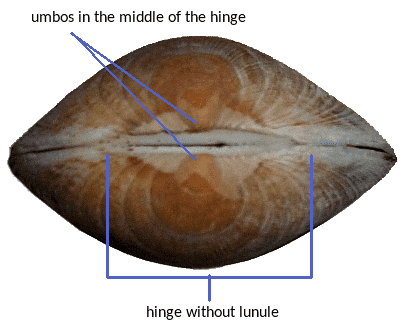
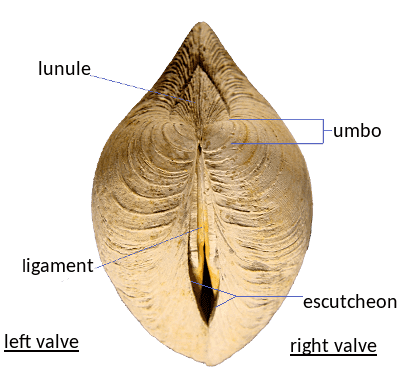
One also distinguish the anterior and posterior parts of a valve: the hook is often slightly inclined forward; the palleal sinus (when it exists) is always behind; if there is only one adductor muscle, it is always at the rear; if the ligament is only on one side of the hook, it is always at the back.
The hinge generally has teeth whose role is to prevent the valves from shifting laterally with respect to one another.
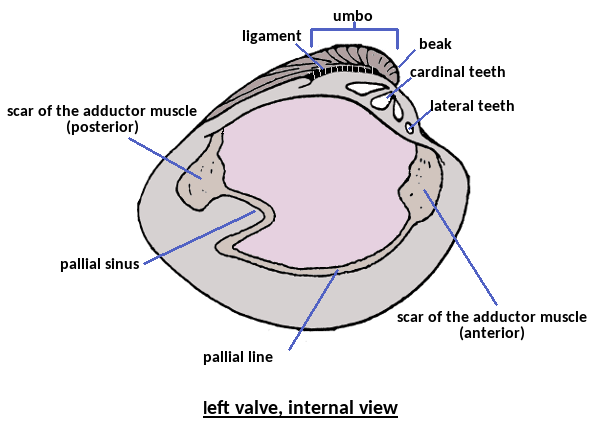
The giant clam is the largest shell, it can measure up to 1.50 m, weigh 250 kg and has a life expectancy of 100 years.
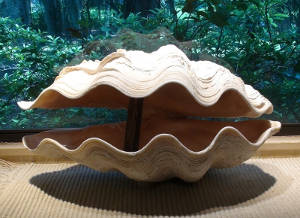
They have neither head nor radula. The gills, in addition to respiration, also allow feeding by water filtration.
The mantle is distributed over the two valves, it is fixed on the anterior edge of the shell, along the palleal line by small muscles which allow it to enter or exit the shell. Like all conchiferans, it produces secretions not only to build the shell but but also the hinge which includes the ligament and the teeth. Depending on the species, the edge of the mantle can carry tentacles or eyes as in Pectinidae. It has very sensitive sensors which allow the animal to retract in the event of danger. It also has a role in food (sorting of incoming particles and constitution of lipid reserves), respiration and reproduction (dissemination of gametes). In species that live hidden in marine sediments, the mantle forms two siphons which, like snorkels, allow it to breathe and expel its waste without being discovered. We recognize the species by the shape of the pallial line which has an end in "S" (the palleal sinus).
Many are sedentary: they attach themselves to a support by a bundle of filaments, the byssal threads. Others are equipped with a large tapered foot which allows them to move or dig the sand. Finally, some like the pectens, propel themselves like jet engines by valves flapping !
Bivalves that live on a substrate, such as mussels, oysters, etc., do not have a siphon. Only bivalves that burrow in the sediment and live buried in the sediment should use these tubular structures. The function of these siphons is to reach the surface of the sediment, so that the animal can breathe, feed and excrete, but also reproduce. The deeper a bivalve species lives in the sediment, the longer its siphons. Many bivalves that have siphons can remove them completely from the shell when needed, but not all species. Bivalves that can remove the siphons in the shell have a "palleal sinus", a kind of pocket, into which the siphons can fit when they are withdrawn, so that both shell valves can close properly. The mark of this pocket is visible even in an empty shell, and forms a "sinus" on the palleal line. The two siphons are located at the posterior edge of the mantle cavity. There is an inhaling siphon and an exhaling siphon. The water circulates under the action of the gills. Usually, water enters the mantle cavity through the inhalation siphon, travels over the gills and exits through the exhaling siphon. The water current is used for respiration, but also for food, excretion and reproduction.
In 2007, researchers from Bangor University (Scotland) have discovered an "ocean quahog" (Arctica islandica), alive and 507 years old !
(but the animal which has the record of longevity is held by the jellyfish of the genus "Turritopsis" since it is biologically immortal !!)
Below, the 50 superfamilies distributed in 20 orders and 1 superorder of bivalves.
The frames display all the "Super-families" and / or "Families" of the same "Order" (or "Superorder"). The name and, in brackets, the type of rank are displayed.
Example : Anomalodesmata (Superorder)If there is no Superfamily, we display the empty symbol (∅)Following the names of the families, the colored dots indicate the environment :
• (marine) • (brackish)• (fresh water)click on a superfamily (or on ∅) to display / hide the families
(These data are extracted (August 2023) from the "Aphia" taxonomic database thanks to the web services of the WoRMS site)
Conversely, my page dedicated to collectors allows you to display to which ancestors a family of bivalves belongs.
> This class of molluscs only exists in the marine environment.
Life expectancy is generally between 1 and 3 years.
The term Cephalopod comes from the Greek, kephalê- = head and -pod = foot. It designates molluscs whose feet, divided into tentacles, surround the head.
The growth of the nautilus shell resembles that of the gastropods except that the winding of the rings is not done like a corkscrew, i.e. going down, but remaining in the same plane. Thus, each turn overlaps the previous turns.
The Argonauts pod is built by the secretions of the longest pair of arms. Unlike real mollusc shells, there is no connection between the animal and the pod. It is the two constructive arms that hold it like a man holding too wide pants that have no belt or suspenders.
These two species use their shells (or pods for argonauts) to adjust the depth of flotation. To do this, they adjust the volume of compressed gas inside the shell.
The nautilus has a coiled shell of approximately 20 cm in diameter and consisting of approximately 30 partitioned chambers, the last housing the body of the animal. The chambers are connected by a tube (the siphon) which adjusts the gas pressure in the chambers, allowing the shell to behave like a float and maintain a neutral buoyancy.
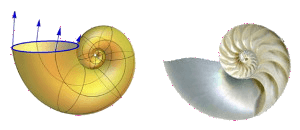
The argonaut's pod resembles that of the nautilus, but it is not partitioned.
Unlike other shells, the argonaut, who is a small octopus, is not linked to its shell, it can come out freely (besides, the male does not have one).

The spirula, which resembles a cuttlefish, has an internal shell of about 5 cm whose function (buoyancy control) and shape recalls that of nautiluses (but with a clear separation of the windings).
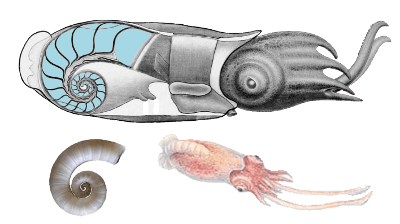
Shells of ammonites, agroup of extinct mollusks, exhibit regular ribs that form perpendicular to the shell edge. Mathematical modeling indicates that this pattern of ornementation is the product of the opposing forces of the mantle and the generative zone, which form an oscillatory system of tension and compression. Slow expansion of the mollusk aperture leads to dense ribbing (left), whereas rapid expansion leads to smooth shells (right).(from Scientific American)

Of all the molluscs, they are the ones with the most developed nervous system. The large central ganglion enclosed in a sort of cartilaginous skull can be considered as a real brain. They are considered to be the most intelligent of the invertebrates.
The mantle of cephalopods completely covers the animal, it is covered with colored organs that allow it to instantly change color.
They have three hearts! two branchial hearts which send blood to recover oxygen in the gills and a systemic heart which sends the renewed blood to the rest of the body.
They have a central brain that controls the nervous system and eight mini-brains in each tentacle that allow them to function independently.
Octopuses have gained another important advantage, they can modify their own genomes. This allowed them to adapt to the environment and make them even smarter.
The hyponome or siphon is the organ used by cephalopods to move. The water enters the mantle cavity around the sides of the siphon, fills the hyponome which expands and then, by contracting, expels a jet of water which by reaction propels the animal. In most cephalopods, such as octopus, squid, and cuttlefish, the hyponome is a muscular tube. The nautilus hyponome differs, however, in that it is a folded one-piece flap.
The nautilus shell is partitioned into several lodges. The body of the animal occupies the last compartment, which is the largest. Unlike the other cephalopods which have eight arms, the nautilus has more than 90 tentacles (without suckers).
The argonaut is a small octopus. The female argonaut (10 to 15 times larger than the male!) Does not really have a shell but secretes a sort of calcitic pod. This pod which she maintains with her dorsal arms, shelters her fertilized eggs. Once the hatching is assured, the female dies and lets escape her "shell".
This class contains two families with an external shell (nautiluses, argonauts) and one family with an internal shell (spirulidae).
They are broken down into two subclasses which are distinguished by the number of gills:
Below, the 15 Superfamilies divided into 11 Orders (or Suborders) of cephalopods. NB Cirrata, Myopsida, Nautilida and Vampyromorpha do not have Superfamilies.
The frames display all the "Superfamilies" and / or "Families" of the same "Order" (or "Suborder"). The name and, in brackets, the type of row are displayed.
Example : Cirrata (Suborder)If an "Order" is not yet assigned, the ascendant of this order is displayed:[unassigned Order of Decapodiformes]If there is no Superfamily, we display the empty symbol (∅)Following the names of the families, the dot indicates the environment (• ⇒ "marine")The gray lines in italics indicate families without shells (the majority)click on a superfamily (or on ∅) to display / hide the families
(These data are extracted (August 2023) from the "Aphia" taxonomic database thanks to the web services of the WoRMS site)
Conversely, my page dedicated to collectors allows you to display to which ancestors a family of cephalopods belongs.
REFERENCES
french websites
english websites